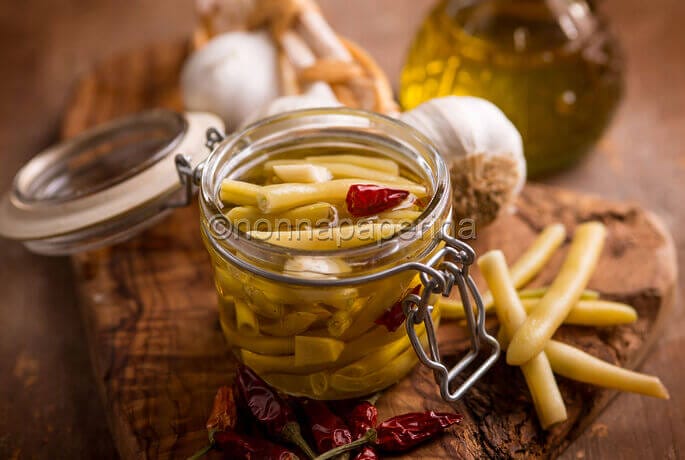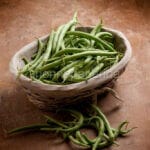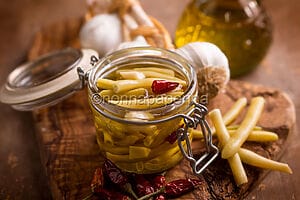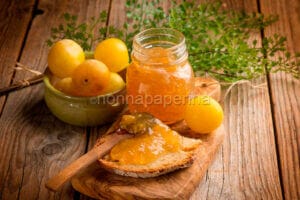
Green beans in oil, a simple but very useful preserve
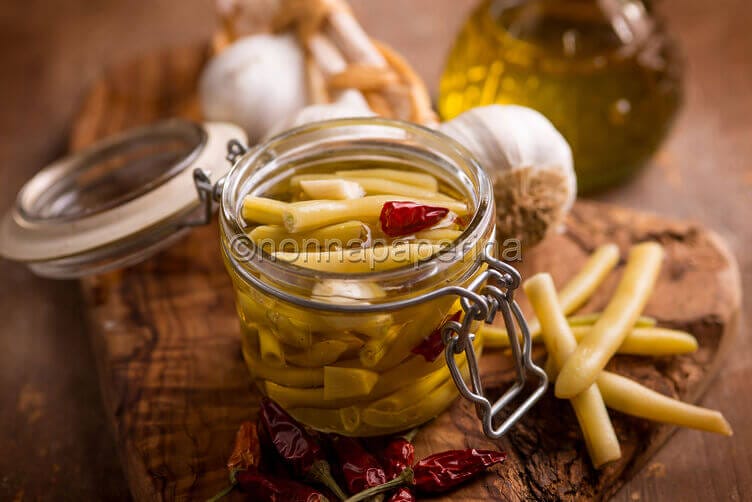
Green beans in oil, a simple and delicious preserve
Green beans in oil is one of the simplest preserves to make, it is also one of the best and most versatile. This recipe enhances the green beans without exceeding the aromas and spices; in fact, the only supporting element is the garlic. For the rest, the procedure is identical to that of other preserves: the food is cooked, transferred into jars, and oil is poured and pasteurised.
Green beans in oil needs a lot of “rest” time before eating, just like many other dishes of the same kind. It’s recommended to wait at least a month between cooking and eating.
Cooking should be done in slightly acidic, boiling water. In this manner, the green beans prevent blackening while also gaining a little more flavour. It is better to submerge the green beans in ice-cold water to stop them from losing colour if there is an excessive amount of time between the end of cooking and transferring them to jars.
Recipe green beans in oil
Preparation green beans in oil
- Before preparing green beans in oil, give them a thorough wash, then trim off the ends and remove the filaments. Now, add the green beans to a pan with water, vinegar, and a little pinch of salt, and simmer for about ten minutes, or until they are crisp (avoid overcooking!). After boiling, move the green beans to a towel to air dry.
- Peel and chop the garlic into four little pieces in the interim. Dice the chiles into little bits as well.
- Place the green beans and the garlic or chilli pepper into the jars that have already been cleaned. Now, add extra virgin olive oil to the jars, leaving a centimetre around the rim free.
- Clean the edges of the jars (if they are greasy) and carry out the pasteurisation: transfer the jars into a pan, separate them with cloths, pour water to cover the jars completely, and “boil” them for 30 minutes.
- After the pasteurisation process is finished, verify the vacuum by pressing the centre of the caps.
- Before opening, keep the jars in a cool area for a month.
Ingredients green beans in oil
- 1.5kg. of yellow-coloured green beans
- 1 litre. of water
- 500 ml. of white wine vinegar
- a clove of garlic
- 2 small dried chillies
- q. b. of extra virgin olive oil
- q. b. of salt
How to use green beans in oil
When eaten on their own, green beans in oil make a delicious and flavorful snack that is unmatched. They can be used to make a variety of recipes, and they go well with a little bread as well. They can also be eaten as a side dish or appetiser, especially when paired with mild cheese or another vegetable. They can also be used in making savoury pies that are flavoured with the oils that were absorbed during preservation.
Green beans in oil can be used to prepare first courses; in this case, they should be added at the end as they are already cooked.
It’s best to play around, looking through the many recipes and thinking of creative yet appropriate combinations. It’s important to foresee the result and how the ingredients will interact with the green beans well in advance.
Which green beans should be used?
For the recipe of green beans in oil, the yellow-coloured green beans would be ideal, as they are characterised not only by their colour but also by their soft consistency and more delicate and sweet flavour. This type of beans is therefore perfect to combine with extra virgin olive oil and garlic, which flavour and aromatize the preserve. With regards to nutritional intake, there are no major differences with green beans. They are rich in fibre and help digestion; they also provide mineral salts and vitamins. They are rich in antioxidants, which are substances that reduce the impact of free radicals and reduce the chances of contracting cancer.
In addition, yellow-coloured green beans contain an additional dose of beta-carotene. This substance, in addition to acting as an antioxidant, is responsible for colour and helps absorb vitamin A. The latter is one of the most important vitamins of all, as it is good for your eyesight and skin.

An additional benefit of green beans is their capacity to control blood sugar and cholesterol levels, which is a crucial aspect for those with diabetes and cardiovascular issues. Lastly, there’s no need to worry about calorie intake—a pound of green beans has about 30 kcal.
How to prepare green bean preserves in oil safely
Green beans in oil gives me the opportunity to delve deeper into a delicate topic: how to prepare preserves in complete safety. To prepare preserves safely, it is necessary to sterilise glass jars and pasteurise them. Sanitization must be carried out before inserting the ingredients, with the aim of eliminating the bacterial load. Pasteurisation must be carried out when the preserve is already ready and has the aim of reducing the risk of the proliferation of microbes.
Both phases follow the same process. Boiling the jars for 30 minutes is enough to separate the caps. In order to prevent breaking the glass at high temperatures, it is also a good idea to space the jars apart and cover them with cloth.
In the case of pasteurisation, it is necessary to check for the presence of a vacuum. To do this, simply look at the central portion of the caps; if it has a concavity, then everything is okay. As long as you replenish the oil as it is used and store the jars in a cool, dry location, these methods should allow the preserves to last one or two years, depending on the type of food.
Green beans in oil FAQs
How to preserve green beans for a long time?
Green beans can be preserved for a long time by transforming them into preserves. Just like peppers, tomatoes, and eggplants, they can be a tasty (and long-lasting) pickle to use in many recipes or as a seasoning.
What is the best way to freeze green beans? raw or cooked?
If you intend to preserve the beans by freezing them, I recommend placing them in the freezer raw. The cooked version, in fact, tends to lose more flavour.
How to maintain the colour of green beans?
Just submerge the green beans in cold, iced water for the period of time between cooking and using them in the recipe (in this case, between cooking and putting them in jars to get the green beans in oil) to preserve their colour.
All rights reservedCOULD IT BE INTERESTING FOR YOU

Yellow plum jam, an excellent recipe!
An ingredient to remember Summer's signature fruit, plums, greets us in a multitude of varieties, each possessing distinct qualities in terms of form, colour, and taste. Our palette is enhanced by...

Stuffed dried tomatoes, a tasty, ever-ready appetiser
How to use dried tomatoes In order to prepare the stuffed dried tomatoes, we first cleaned the ripe tomatoes, cut them lengthwise, salted them, and arranged them on the dehydrator racks. The best...
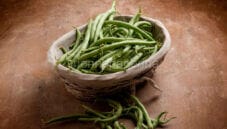
Pickled green beans, a delicious preserve in the...
Useful tools for the preparation of preserves Let's look at everything you'll need in your kitchen to make some delicious preserves. The tools typically found in a well-stocked kitchen will be...










